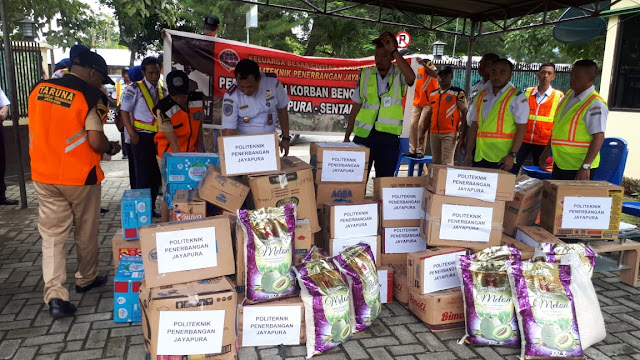LIST OF DANGEROUS GOODS (DGR 4.2)
berikut ini
adalah kutipan dari DGR.4.2 –
List of Dangerous Goods, umumnya
dikenal
sebagai "halaman biru".
baca DGR 4.1.6;
setiap kolom dijelaskan secara rinci
Kolom A : UN (united nations) atau Nomor ID (identification) , DGR 4.1.6.1
Kolom B : PROPER SHIPPING NAME, DGR 4.1.6.2
Kolom C : kelas (Class), divisi (Division) dan resiko
tambahan (subsidiary risk)
dalam tanda kurung, DGR 4.1.6.3
Kolom D : Label Bahaya (Hazard Label) 4.1.6.4
Kolom E : Packing Group [ I (X), 2(Y), 3 (Z) ]. DGR
4.1.6.5
Kolom F : Excepted Quantity Code. DGR.4.1.6.6
Kolom G &
H : Kwantitas terbatas (kode Y) atau Limited Quantities. DGR 4.1.6.7 + 4.1.6.8
Kolom I : Packing
Instruction (yellow pages) Passenger and cargo, DGR 4.1.6.9
Kolom J : Maximum Net Qty (berat bersih) per kemasan
“Passenger and cargo”
DGR 4.1.6.10
Kolom K : Packing Instruction (yellow pages) Cargo
Aircraft Only,
DGR 4.1.6.11
Kolom L : Maximum Net Qty (berat bersih) per kemasan
“Cargo Aircraft Only”
DGR 4.1.6.12
Kolom M : SPECIAL PROVISION. DGR.4.4, DGR. 4.1.6.13
Kolom N : EMERGENCY RESPONSE DRILL CODE (ERG), DGR
4.1.6.14
SPESIFICATION
PACKAGING MARKINGS
Example I :
kemasan
kombinasi dengan kemasan dalam yang bisa berisi
cairan atau zat
padat
UN 4G / Y5 / S / 11 / A / PA – 03 / 3050
KETERANGAN
4G : Kode Jenis kemasan untuk “FIBREBOARD
BOXES” Yellow Pages
Y : Tipe desain berhasil diuji
untuk Packing Group
II (dapat digunakan
Untuk Packing Group III)
5 : berat kotor maksimum dalam kilogram
dimana jenis desain telah
Diuji
S : mengandung padatan atau kemasan dalam
11 : Tahun pembuatan : 2011
A : Wewenang Negara : kode A “AUSTRIA”
lihat Appendix D
PA-03/3050 :
Nomor Pabrik “tanda
identifikasi dialokasikan oleh
otoritas nasional Austria untuk produsen
Q-VALUE
DIFFERENT
DANGEROUS GOODS PACKED
IN ONE OUTER PACKAGING
a. Yang paling
bersifat membatasi
PG, paket harus
memenuhi standar kinerja PG.
b. Nilai
Q “Q value” Berat bersi per
kemasan tertinggi yang diizinkan menurut
Rumus Nilai Q, dimana Q tidak melebihi 1.
Example
;
(Net) 1 L UN 1203 petrol,
(Net) 5 L UN1223 kerosene, dan
(Net) 0,2 L UN1230 methanol
dikemas dalam
UN specification packaging dan diangkut pada sebuah Passenger Aircraft.
Max net quantity per kemasan untuk pengangkutan pada
Passenger Aircraft adalah:
UN
1203 = 5 L (Max)
UN
1223 = 60 L (Max)
UN
1230 = 1 L (Max)
Nilai Q harus dihitung sebagai berikut :
1 5 0,2
Q = ------ + ------- +
--------
5 60 1
Q = 0,20 + 0.08 + 0.2
Q = 0.48
Nilai
Q harus dibulatkan ke decimal pertama :
Q = 0.5 < 1
Legend
/Keterangan
n : Total Berat bersih (Net Quantity)
per item
M : Maximum berat bersih (Net Quantity)
per item dari 4.2 List of
Dangerous Good (hal.biru)
Q : nilai Q yang tidak pernah lebih besar
dari 1
Nilai
Q harus ditunjukkan pada Shipper Declaration untuk kategori Dangerous Goods.
TABLE 9.3.A
SEGREGATION OF PACKAGE (9.3.2)
Notes :
1. Tanda silang
“X” dari baris atau kolom diindikasikan bahwa kemasan mengandung
Class dan
Division Dangerous Goods harus di pisahkan,
2. Division 4.1, class 6,7 dan 9 tidak
termasuk dalam Table 9.3.A karena
tidak
memerlukan pemisahan dari Class Dangerous Goods lainnya.
Example
I :
Item A (UN
2572) termasuk Divisin 6.1 ;
Divisi ini
tidak termasuk dalam Tabel 9.3.A dimana tidak memerlukan pemisahan dari
Class
Dangerous Goods lainnya, (lihat catatan
“note” dibawah table 9.3.A).
jika
pengirim mengetahui bahwa kedua item tidak bereaksi berbahaya dengan
lainnya,
item ini bisa dikemas bersama dalam kemasan luar yang sama.
Example II :
Division 5.1
dan Division 4.2 seperti terlihat pada Table 9.3.A, memerlukan pemisahan,
dikarenakan adanya tanda silang
“intersection X” pada table.
Created By
Ririn hasra for Learning easier
























